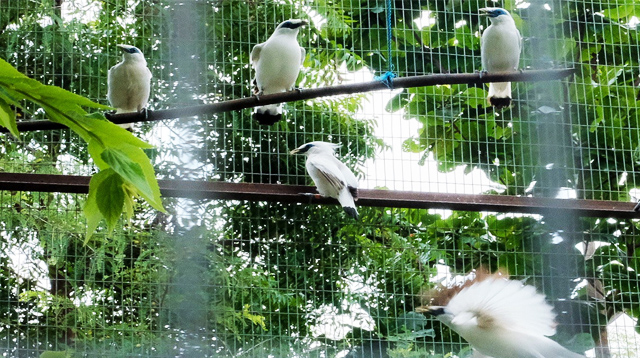- BALI Starling comes with exotic white feather and elegant dark blue on its eyelids and its habitat is in West Bali National Park
- As an endemic bird of Bali, it was then named the fauna icon of Bali Province in 1991.
The Bali Starling (Leucopsar rothschild) is a medium-sized songbird, about 25 cm long, from the Sturnidae tribe. The Bali Starling is only found in the forests of the western part of Bali Island and is endemic to Indonesia. This bird is also the only species endemic to Bali and in 1991 was named the faunal symbol of Bali Province.
Population of this animal endemic to West Bali had fallen sharply and even almost became extinct because there were only 6 of them left in the wild. However, thanks to the conservation efforts being carried out, currently its population has been recorded to reaches 560 heads.
History
The Bali Starling was first discovered in 1910. The scientific name of this exotic bird is adapted to the name of the British animal expert, Walter Rothschild, who was the first to describe this species to the world of knowledge in 1912.
By the end of 2022, Minister of Tourism and Creative Economy of the Republic of Indonesia, Sandiaga Uno, made a visit to this national park, the habitat of Bali Starling.
He proposed conservation-based tourism, ecotourism-based activities which could continue to be strengthened to become an attraction. For example, this is complemented by efforts to preserve the Bali Starling which cannot be found everywhere, but only in the West Bali National Park. Surely, this can apply and support the concept of quality and sustainable tourism.
Tourist Attractions
Today, it also becomes a tourism icon of West Bali National Park and its conservation efforts can become a unique tourist attraction for tourists.
By introducing Bali Starlings to tourists, they will get to know more about the Bali Starlings. Of course, in the tour they are invited to be involved in conservation efforts through offered tour packages that will provide an wonderful experience for them.
“This will become an attraction and automatically become a magnet for visits to West Bali, especially Jembrana. If the accessibility infrastructure, namely the Probolinggo-Banyuwangi and Denpasar-Gilimanuk toll roads has been completed, this will attract more tourist visits,” said Minister Sandiaga in the press release of Ministry of Tourism and Creative Economy.










